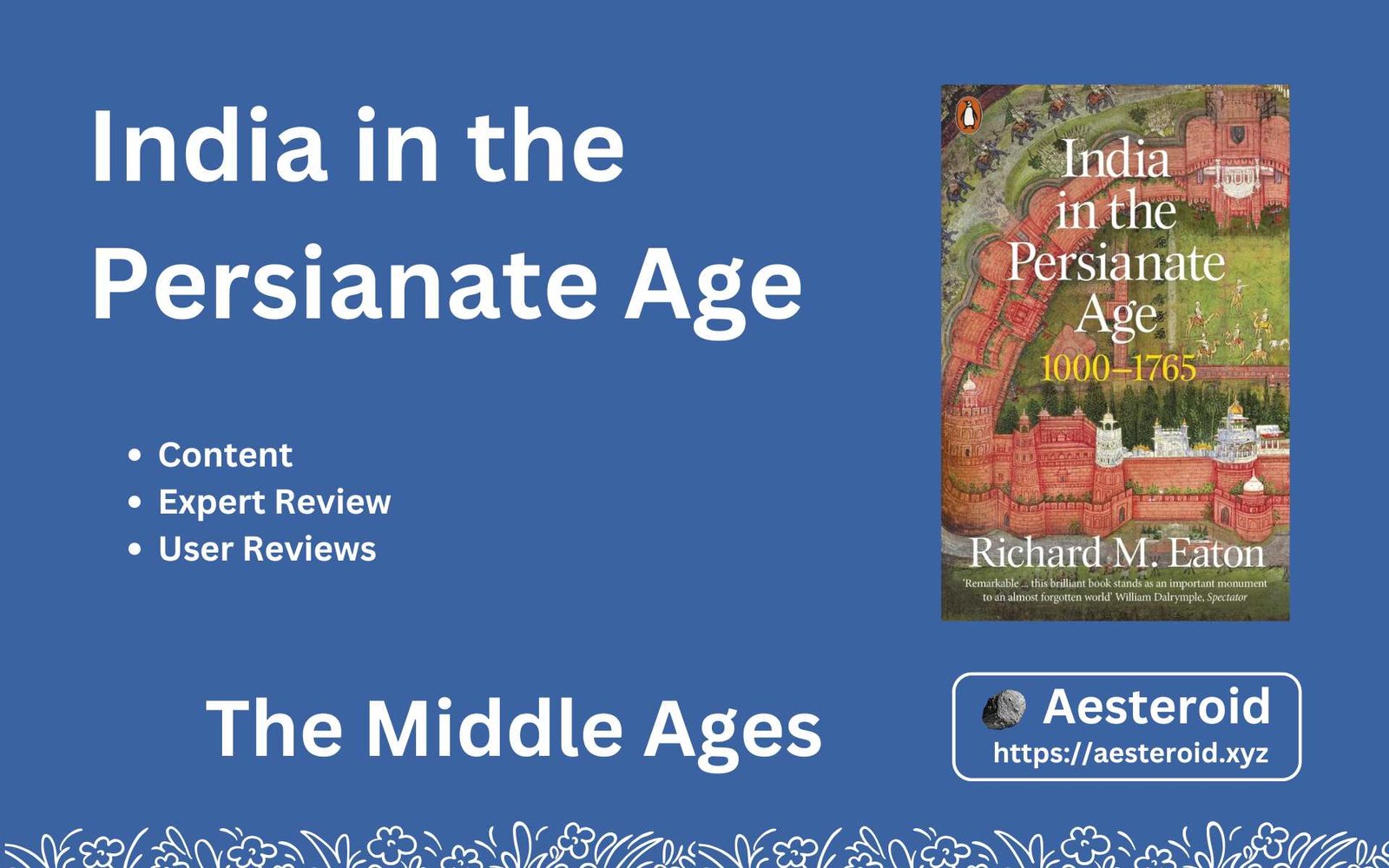India in the Persianate Age is a medieval history book written by Richard Eaton, professor of History at the University of Arizona. Richard is considered one of the neutral voices of medieval history.
I have picked this book based on the recommendation of Abhijit Iyer Mitra in a podcast, a well-known geopolitical expert.
Amazon Link (Opens in New Tab)
Table of Contents
- The Growth of Turkic Power, 1000–1300
- A Tale of Two Raids: 1022-1025
- Political Culture in the Sanskrit World
- Political Culture in the Persianate World
- The Ghurid Conquest of North India, 1192–1206
- The Delhi Sultanate under the Mamluks, or Slave Kings
- Conclusion
- The Diffusion of Sultanate Systems, 1200–1400
- Imperial Expansion Across the Vindhyas
- Settlers, Shaikhs, and the Diffusion of Sultanate Institutions
- The Early Bengal Sultanate
- Sultanates of the Deccan: the Bahmanis and Vijayanagara
- The Early Kashmir Sultanate
- The Decline of the Tughluq Empire
- Conclusion
- Timur’s Invasion and Legacy, 1400–1550
- Overview
- Upper India
- Bengal
- Kashmir
- Gujarat
- Malwa
- Emerging Identities: the Idea of ‘Rajput’
- Writing in Vernacular Languages
- Conclusion
- The Deccan and the South, 1400–1650
- Links to the Persianate World
- Successors to the Bahmani State
- Political and Cultural Evolution at Vijayanagara
- Gunpowder Technology in the Deccan
- Cultural Production in the Gunpowder Age
- Vijayanagara’s Successors and South India
- Conclusion
- The Consolidation of Mughal Rule, 1526–1605
- Overview
- Babur
- Humayun
- Akbar’s Early Years
- Emerging Identities: Rajputs
- Mughal Expansion Under Akbar
- Akbar’s Religious Ideas
- Conclusion
- India under Jahangir and Shah Jahan, 1605–1658
- Jahangir
- The View from the Frontier
- The Deccan: Africans and Marathas
- Emerging Identities: the Idea of ‘Sikh’
- Assessing Jahangir
- Shah Jahan
- Conclusion
- Aurangzeb – from Prince to Emperor ‘Alamgir, 1618–1707
- Prince Aurangzeb – Four Vignettes
- War of Succession, 1657–9
- ‘Alamgir’s Early Reign
- Emerging Identities: the Marathas from Shahji to Tarabai
- “One Pomegranate to Serve a Hundred Sick Men”
- Religion and Sovereignty Under ‘Alamgir
- Conclusion
- Eighteenth-century Transitions
- Political Changes, 1707–48
- Maratha Uprisings
- Sikh Uprisings
- Emerging Identities: Muslims in Bengal and Punjab
- Early Modern Globalization
- Conclusion
- Conclusion and Epilogue
- India in the Persianate World
- The Mughals in the Sanskrit World
User Reviews
The book has a review of 4.5 out of 5 based on 490 global ratings on Amazon.
About the Author
Richard M Eaton is an American historian currently a professor at the University of Arizona.
Some of his notable books are:
- Sufis of Bijapur, 1300-1700 – Princeton University Preas: 1978
- Islamic History as Global History – American Historical Association,: 1990
- Firuzabad: Palace City of the Deccan – Oxford University Press: 1992
- The Rise of Islam and the Bengal Frontier, 1204-1760 – Oxford University Press: 1993
- Essays on Islam and Indian History – Oxford University Press: 2000
- A Social History of the Deccan, 1300-1761 0 Eight Indian Lives. Cambridge: Cambridge University Press, – published: 2000 (The New Cambridge History of India. I.8)
- India’s Islamic Traditions, 711-1750 (general editor). Oxford University Press: 2003
- Approaches to the Study of Conversion to Islam in India in Religious Movements in South Asia 600-1800 (edited by David N. Lorenzen) – Oxford University Press: 2005
- Temple Desecration and Muslim States in Medieval India – published: 2004
- Slavery and South Asian History (co-editor with Indrani Chatterjee) – Indiana University Press: 2006, ISBN 978-0-253-11671-0
- Power, Memory, Architecture: Contested Sites on India’s Deccan Plateau, 1300-1600 – Oxford University Press: 2014
- India in the Persianate Age: 1000-1765 – University of California Press; Penguin: 2019
- The Oxford Handbook of the Mughal World. 2020. DOI:10.1093/oxfordhb/9780190222642.001.0001

